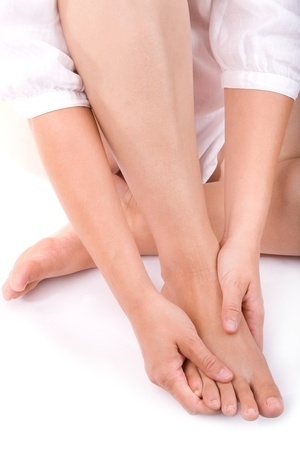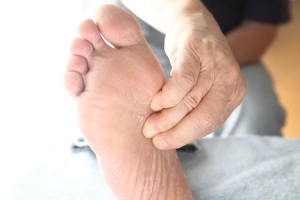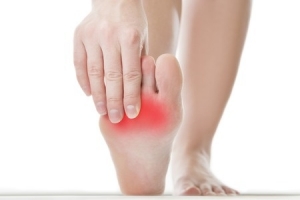Connect With Us
Blogs
Displaying items by tag: metatarsalgia
5 Tips for Overworked Feet
Do you have an occupation that requires you to be on your feet for long hours at a time? At Superior Foot & Ankle Care Center we find that nurses, teachers, construction workers and other patients with jobs that have them upright and mobile for most of the day are more likely to have foot pain and swelling and are also at a higher risk for developing podiatric disorders. Although we can’t change your job, we can offer suggestions for ways to minimize foot pain and increase your comfort level.
Get Problems Checked Out Promptly
- The majority of foot problems, such as plantar fasciitis, sesamoiditis, flat feet and metatarsalgia, are made worse by being on your feet for extended periods of time. For this reason, if your work requires this, it’s particularly important to not put off getting foot problems evaluated. Our podiatrists, Dr. Victoria Foley and Dr. Constance Ornelas will examine your feet to determine the cause of your symptoms and recommend the best treatment. The foot doctor may be able to suggest padding or an orthotic device for your shoes to help relieve foot pain. Be sure to let the podiatrist know that you have a job that requires you to spend long hours on your feet.
Choose Shoes Wisely
- Your shoe choice is critical for comfort and protection. Choose styles with good ankle and arch support and a cushioned insole. It’s a good idea to alternate your shoes as well for maximum comfort and to avoid excess pressure to one particular spot on your foot.
Stay Hydrated
- Although it may seem backwards, drinking plenty of water is one of the best ways to prevent painful edema or swelling of your feet and ankles.
Make the Most of Break Time
- When you do get a break, get off your feet for as long as you can and elevate them if possible. Do some stretching exercises and flex your feet and toes. Once your break is over, try to change your position frequently. If you are unable to sit down, at least shift your weight from foot to foot.
Compensate During Non-Work Hours
- Be sure to put your feet up when you get home from work. Choose exercise and fitness activities that don’t put additional strain on your feet. Swimming, biking and rowing are examples of physical activities that don’t put more pressure on your feet. Be sure to soak your feet if they are sore and treat yourself to a foot massage now and then to relieve pain and stiff muscles.
If you have additional concerns about your feet and your occupation, contact our Long Beach office by calling: (562) 420-9800.
Could You Have Metatarsalgia?
Are you experiencing acute pain in the ball of your foot? Is the pain more noticeable with increased activity or when you are walking barefoot? Have you noticed a callus beginning to form in the spot where the pain is? If you answered yes to one or more of these questions, you may be suffering from a condition we treat at Superior Foot & Ankle Care Center known as metatarsalgia.
Your metatarsal bones run down the middle of your foot from your ankle to each of your 5 toes. When the nerves between two of the metatarsals become inflamed, it causes pain, and this is known as metatarsalgia.
What’s Behind the Pain
Basically, metatarsalgia occurs when there is either too much pressure or an uneven pressure applied to the metatarsals. This can have a wide range of causes, however, including:
- Overpronation
- Arthritis
- Foot injuries
- Aging
- Weight gain
- Overuse from weight-bearing sports such as running
- Foot deformities
- Morton’s neuroma
- Poorly fitting footwear
- Standing for long periods on hard surfaces
Getting Relief
The treatment for metatarsalgia will depend on the cause. The first step is to have our podiatrists, Dr. Victoria Foley and Dr. Constance Omelas examine your feet. The foot doctor will also want to get your medical history and ask about your recent activities. Once the reason behind the metatarsalgia has been found, the foot doctor may recommend one or more of the following:
- Icing the area and taking over-the-counter anti-inflammatory medications to relieve pain and inflammation
- Resting your feet from sports and physical activities that aggravate the ball of the foot
- Custom orthotics to correct overpronation or other biomechanical issues
- Wearing properly fitting, supportive shoes
- Losing weight if you are overweight to reduce pressure on your feet
If you are experiencing pain or pressure in the ball of your foot, contact our Long Beach office today for an appointment by calling: (562) 420-9800.
Do’s and Don’ts for Reducing Risk of Childhood Obesity
At Superior Foot & Ankle Care Center we treat many conditions that are made worse by the patient being overweight. The risk and severity of arthritis in the feet and ankles, metatarsalgia and flat feet, for example, are all increased by obesity. In addition, being obese increases the risk for diseases like diabetes and hypertension, which also have serious health consequences for your feet. September is National Childhood Obesity Awareness Month. Studies have shown that obese children tend to continue to be obese as adults. For that reason, it’s important to foster healthy lifestyle habits during childhood. Below are some do’s and don’ts to help your child maintain a healthy weight:
Do: strive to have your child spend at least 60 minutes a day being physically active. Encourage them to participate in a wide variety of activities to be sure they get exercise that is aerobic, muscle and bone strengthening. Not all activities have to be organized. Just playing in the yard children are likely to run, jump and climb which will give them all the types of exercise they need.
Don’t: force your child to be active if they complain of foot or ankle pain. If you suspect a podiatric problem is sidelining your child from being physically active, contact our Long Beach office (562-420-9800) for an appointment. Our podiatrists, Dr. Victoria Foley and Dr. Constance Omelas will examine your child’s feet to determine if there is an injury or other disorder that is causing them pain.
Don’t: allow unlimited amounts of time spent in front of a screen. If your child has full-time access to cell phone, television, computer and video games they are less likely to engage in physical activities.
Do: make changes in your family’s eating habits. Increase the number of fruits and vegetables in your menus, replace sugary drinks with water and have healthy snacks readily available. Involve your children in menu planning and grocery shopping and teach them how to make good food choices.
Do: set a regular bedtime for your child or teen that allows them to get enough sleep. Depending on your child’s age, they may need between 8 and 12 hours of sleep per night. Studies show that lack of sleep increases the risk of obesity.
Approximately 1 in 5 children today are obese. Working together, families and communities can help greatly reduce this number with lifestyle choices that will make for healthier children and, ultimately, healthier adults.
Excess Pressure Can Be a Pain in the Foot
Our feet are pretty forgiving. They take us where we need to go and help us stay fit by enabling us to participate in sports and exercise activities. They even accept being crammed into uncomfortable shoes now and then for the sake of fashion. However, we can push it too far. When an excessive amount of pressure is put on our feet we are susceptible to many foot disorders. One of them is metatarsalgia. This condition’s telltale sign is pain in the ball of the foot where the five long metatarsal bones end. At Superior Foot & Ankle Care Center we find that there are many ways that patients put too much pressure or uneven pressure on this part of the foot, including:
- Standing or walking for long periods of time on very hard floors or ground
- Frequently participating in weight-bearing activities such as running, dancing or basketball
- Wearing shoes that fit improperly or spending too much time in shoes with very rigid soles such as work boots or hiking shoes
- Gaining weight
Sometimes, metatarsalgia is caused by conditions that are beyond a patient’s control such as arthritis, flatfeet (overpronation), an injury or foot deformity. This condition is also more likely to occur with age as the fat pads on the bottom of our feet naturally begin to wear down.
Treating Metatarsalgia
If our podiatrists, Dr. Victoria Foley and Dr. Constance Omelas, diagnose metatarsalgia the first step will be to reduce the pain and discomfort that you are experiencing. This can usually be accomplished with rest, icing and anti-inflammatory medications. The next step will be to deal with the root cause of the condition. Depending on what the source of foot pressure is, the foot doctor may recommend changing the types of shoes you wear, losing weight, treating an existing condition or using a custom orthotic device to alleviate inflammation to the affected area.
Be good to your feet by not waiting to seek medical treatment if you are experiencing pain, discomfort or other unusual symptoms. Contact our Long Beach office for an appointment by calling: (562) 420-9800.




